Hosta Siebold: features, varieties, agricultural technology
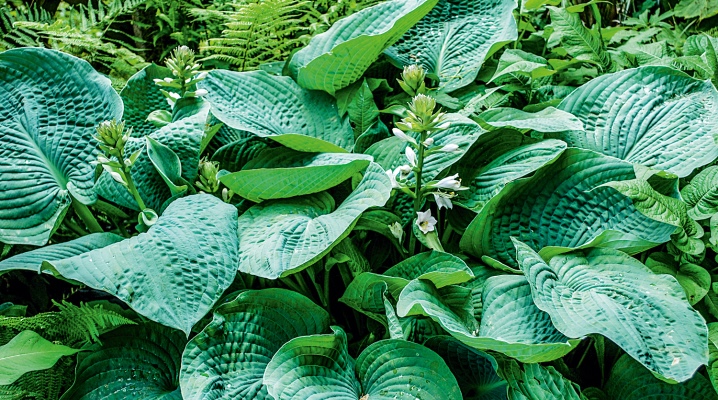
Hosta is an unusual plant that emphasizes and combines different types of flowers, completing the composition. At the same time, it is not a faded background, because it itself has rather high decorative properties. Hosta sieboldiana looks beautiful at any time, therefore it is the favorite of many landscape designers.
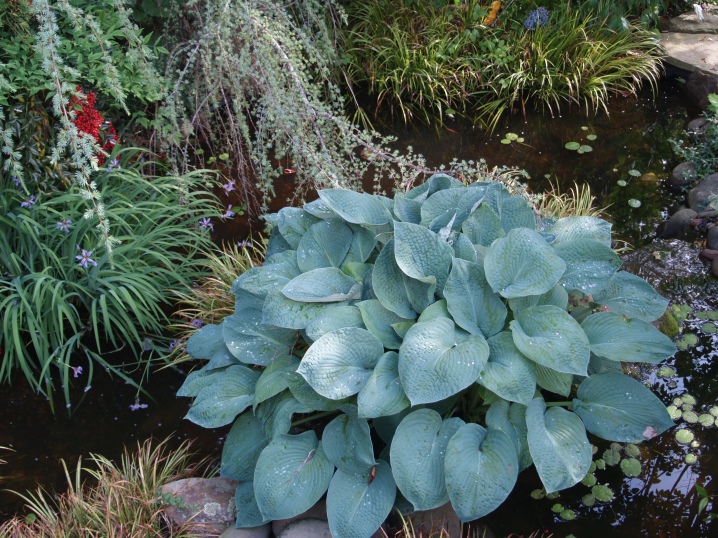
Description and characteristics
The plant belongs to perennials and belongs to the family of asparagus... Under natural conditions, it can be found in Japan (Honshu Island). The bush got its name in honor of the famous botanist Philip Siebold. The shrub has wide leaf plates with a fairly dense structure, their length is about 30 cm, and their width is up to 25 cm. The leaves are covered with a light bluish bloom, their shape is heart-shaped with well-pronounced ribbing.
The color has a bluish-gray tint, which is why the plant is referred to as blue hosts. The bush produces low (about 40 cm) peduncles, on which light lilac funnel-shaped flowers are formed, having a length of 5-6 cm. Hosta Siebold blooms in July, the inflorescences are almost buried in green leaves.
At the end of flowering, triangular small fruits with black seeds ripen on them. The root system of the plant is low-branched, compact in size.
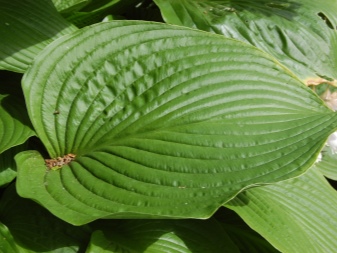
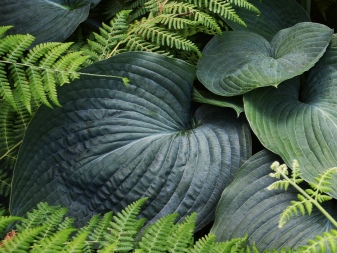
Varieties
The most popular and beautiful representatives of the Siebold hosts are:
- Elegance - a very beautiful plant, with grayish-blue leaves and light purple inflorescences, the bush reaches 65-70 cm in height, and up to 90 cm in width;
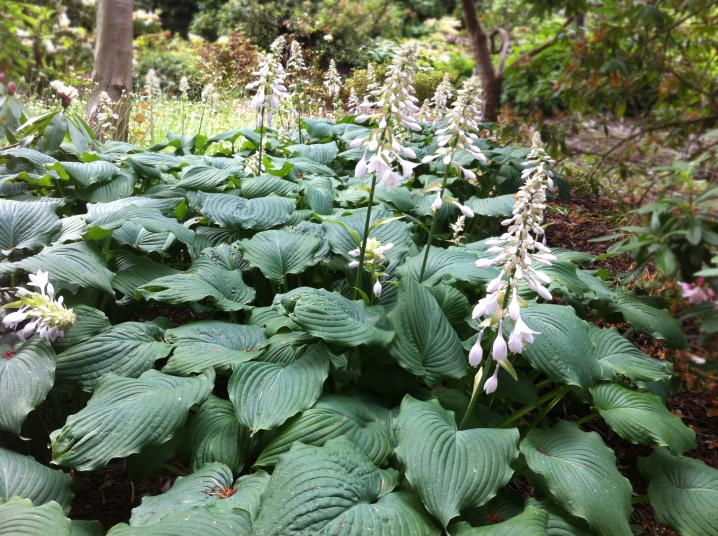
- Francis Williams also has a rather large size, the leaves are uneven in color - the edges are edged with a yellow-cream stripe, and the main color is gray-blue;
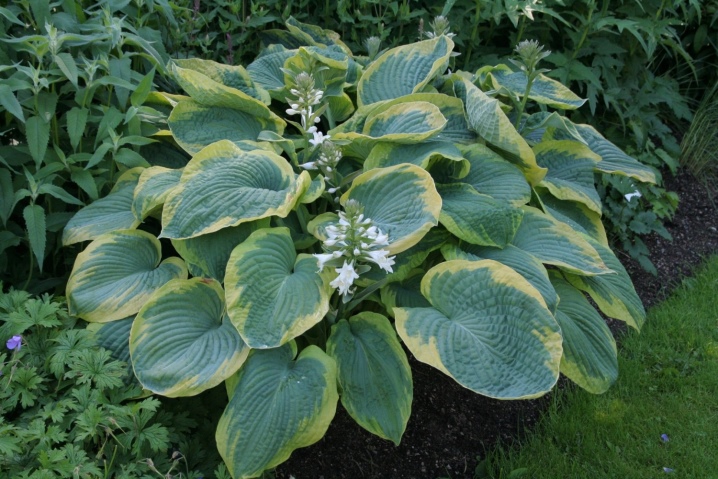
- Halcyon - the variety that was bred as a result of hybridization of Hosta sieboldiana and Hosta tardiflora, it belongs to low crops, the leaf plates are distinguished by a beautiful bluish tint;
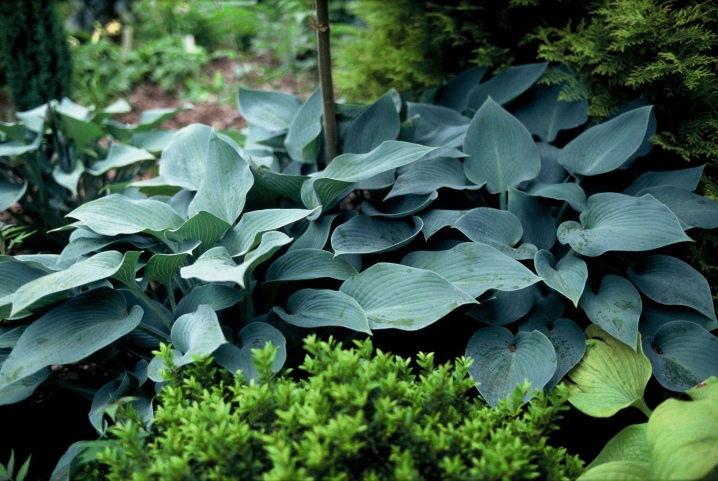
- Hercules - a tall bush with large blue-green leaves and white inflorescences that bloom in June;
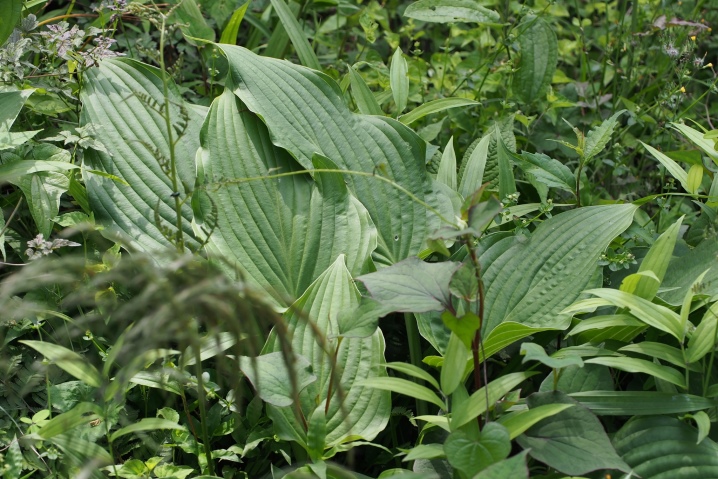
- Semperaurea belongs to rather large varieties, wide leaves are painted in yellow-green shades.
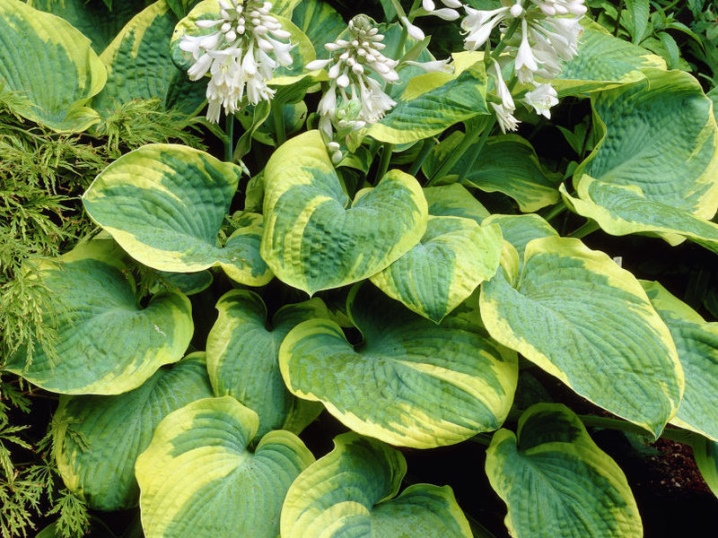
Landing
The growing season of the hosta begins somewhat later than other crops, so it can be easily planted in late spring or early autumn. The plant is shade-loving, which should be considered when choosing a site. Khosta Siebold prefers light, fertile soil with good moisture. Clay and sandy soil is not suitable for growing hostas. The optimal time for planting is in the evening, preferably after 18.00, when the heat subsides and the temperature drops slightly.
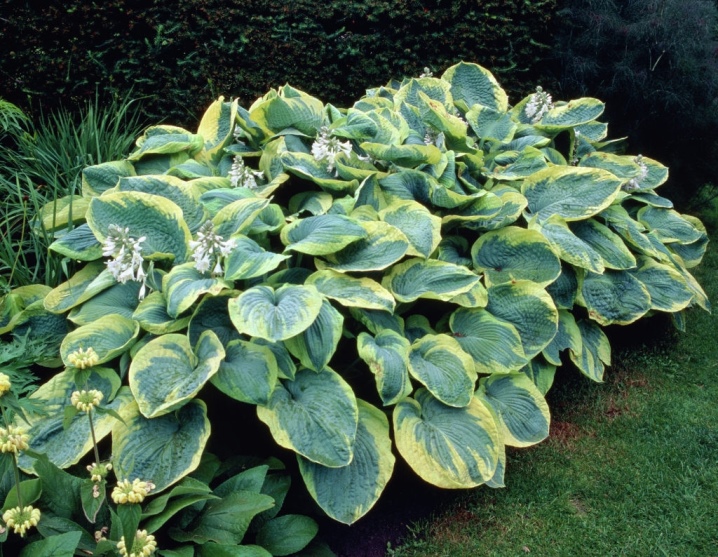
Landing is carried out as follows:
- planting holes are wide and deep enough;
- a little humus is poured to the bottom;
- to increase the air permeability of the soil, you can also add a small amount of peat;
- perlite should be used as drainage;
- a little water is poured into the recesses and a seedling is placed, but it must be positioned so that all the buds are above the ground;
- the plant is watered and covered with soil;
- a layer of mulch (sawdust, bark or peat) is applied on top.
The distance between the holes is made based on the parameters of an adult plant, 30-80 cm. When planting in autumn, especially if the winters are cold, the seedlings should be covered with agrofibre for the winter.Khosta is a frost-resistant crop, and adult plants are quite capable of hibernating without shelter, but young bushes can freeze slightly.
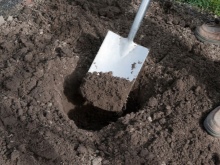
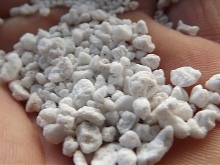
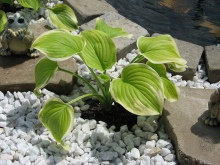
How to care?
Caring for the plant is not difficult and, moreover, does not take much time.
- It is worth watering the bush in the morning or in the evening, but so that the lower leaves have time to dry out by night. Wet leaf plates lure slugs, which damage the plant. In addition, watering does not need to be carried out on the leaves, because they are covered with a special film that can be washed off. At the same time, the plates lose their protection and attractiveness - the blueness of the cover.
- It is enough to feed the flower 2-4 times a season. The last time the plant is fertilized in August. Complex feeding is suitable for Siebold's hosts; they should be applied after the plant has been well hydrated and preferably before 11 a.m. In early spring, complex fertilizing with microelements is applied, during flowering - fertilizers with potassium and phosphorus, and in autumn - potassium sulfate.
- At the end of flowering, it is worth cutting off the arrows that do not adorn the plant. In addition, the plant spends energy to ripen the seeds.
- For the winter, the bush is cut off, you do not need to cover it, since the species is frost-resistant. It is quite enough to pour a layer of dry foliage on it.
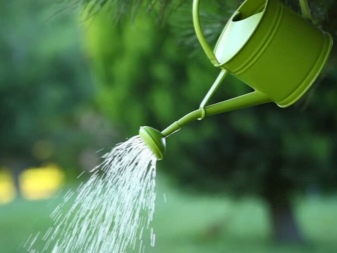
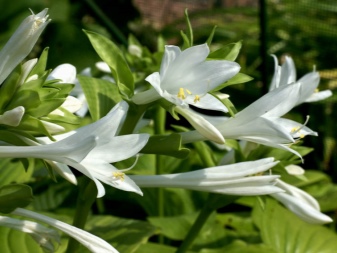
Organic fertilizing (not fresh) can be applied under the bush throughout the season. In summer, it is also necessary to regularly loosen the ground, remove weeds and wilted flower stalks.
Reproduction methods
You can grow a Siebold host:
- cuttings;
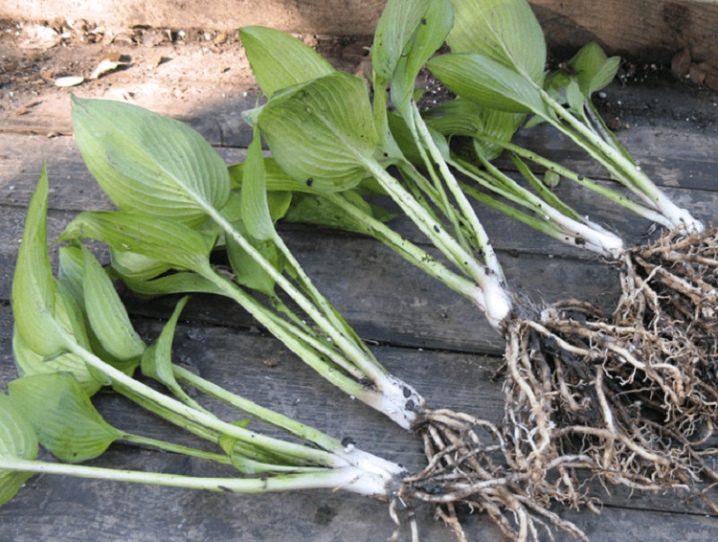
- by the seed method;
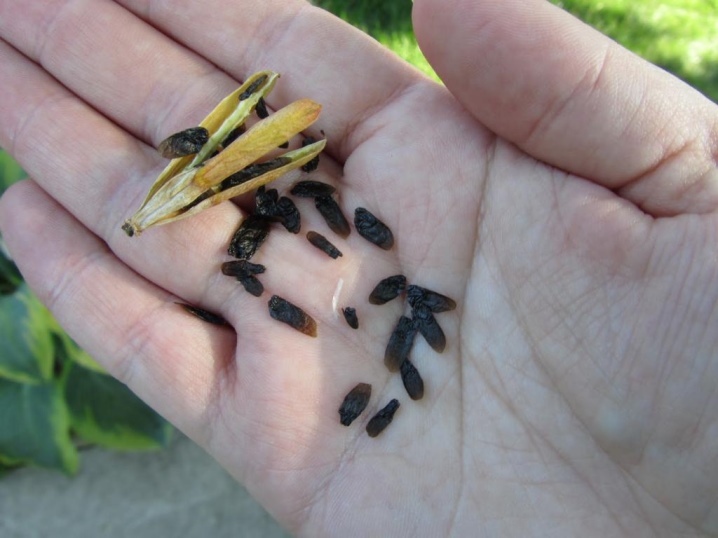
- division.
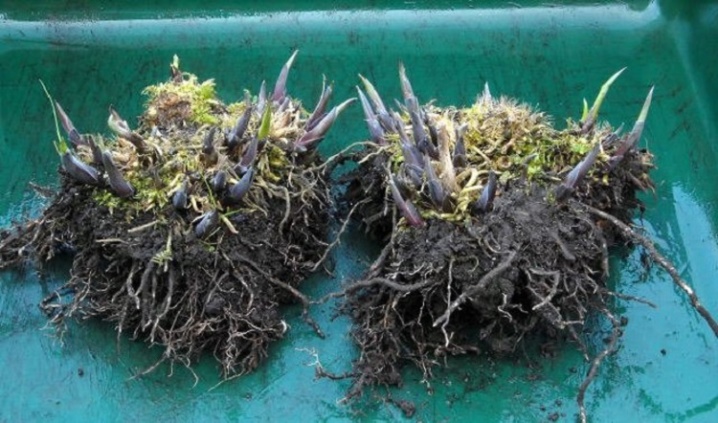
As cuttings, take small young shoots or rosettes with small leaves, having a root and easily separating. In this case, the bush is not dug up. Cuttings are planted directly into the soil and shaded, until they are rooted normally, they must be moistened every day. If the sprouts look lethargic and lifeless, don't worry, they'll sprout in a couple of days. Seed propagation is quite laborious and is mainly used by breeders to develop new varieties, besides, hosta seeds germinate very poorly.
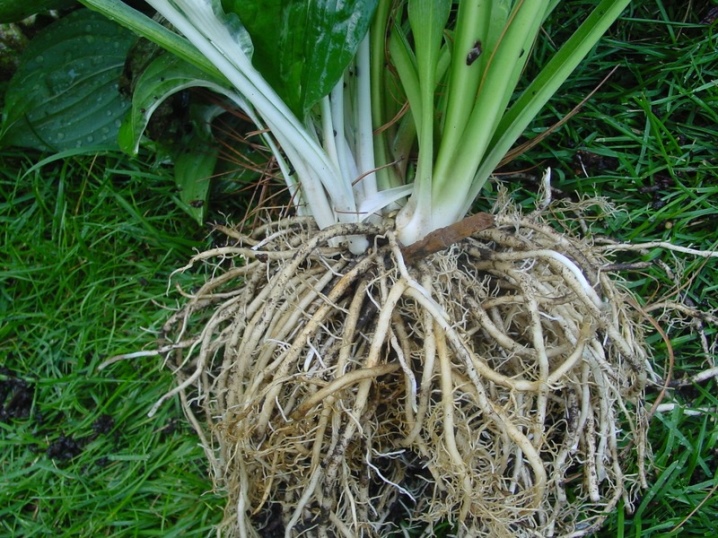
But who wants to give it a try can do it like this:
- the seeds are kept in a stimulant solution;
- soil is compacted in a container and seeds are planted to a depth of 6-7 mm;
- a small layer of perlite is poured on top and the soil is again tamped;
- keep the container at + 20 ° С;
- after a few weeks, shoots appear, when the first leaf is formed, they dive (the soil must be nutritious);
- a little sand is poured onto the soil on top;
- you need to water regularly, but through the pallet;
- to prepare for planting in open soil, the sprouts periodically need to be taken out into the street.
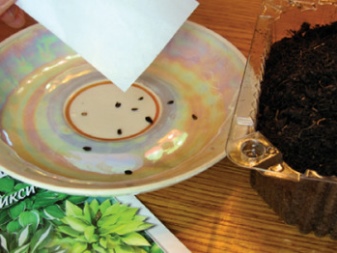
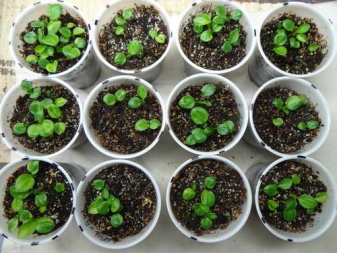
Seedlings can be sent to the site when they get stronger and have 3-4 buds.
Dividing the bush is the most common breeding method for Siebold hosts. The plant is capable of division at 4-5 years of age. The procedure is carried out in spring or early autumn. The bush is well watered, dug up and divided into several parts with a sharp knife, and each must have at least a couple of outlets.
It is worth planting bushes at the same depth at which the mother plant grew. It is worth moisturizing young plants well and regularly until they are completely rooted.
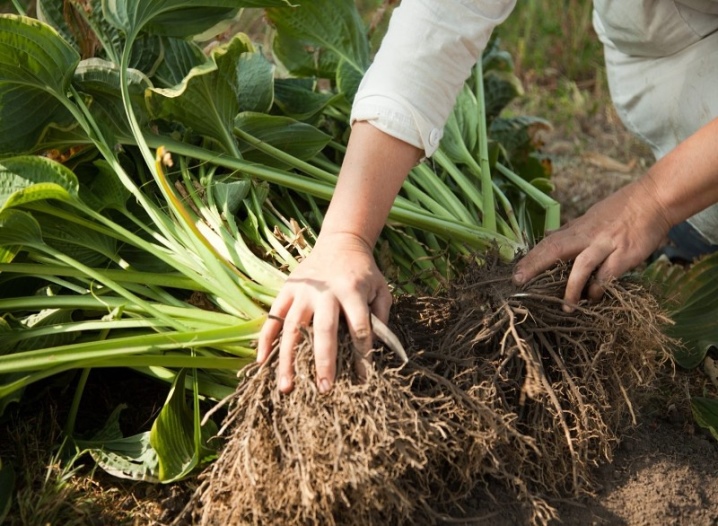
Diseases and pests
The host can be infected with the HVX virus, a disease that affects only this type of plant. As a result, the leaf plates become stained and wither. Infection with the virus occurs through the juice, so all instruments must be disinfected when pruning. Unfortunately, the disease cannot be cured, the infected bushes are burned. Also, due to improper conditions or care, the plant may suffer from rot of the root collar, the disease is expressed by yellowing and loose foliage.
Treatment consists in digging out the bush, removing diseased parts and treating it with fungicides. Also, the plant is transplanted to another site (if the soil is clay, add sand or peat), placing two tablets of glyoxidin in the well during transplantation. Among pests, the host is most often affected by caterpillars and slugs.
In order to prevent them from eating leaves, it is worth placing a layer of mulch from sawdust and ash around the plant, and if there are a lot of insects, insecticides are used.
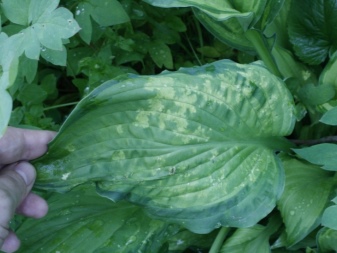

Hosta Siebold serves as a real decoration of the site, its use is appropriate everywhere: along paths, in flower beds, near trees or fences. By cultivating this culture, you can be sure that it will add a unique charm to the garden's appearance.
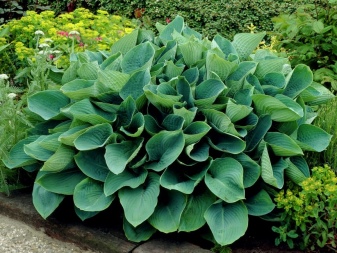

For information on how to share and transplant a host in the fall, see the next video.







































































































The comment was sent successfully.